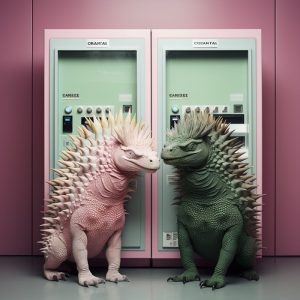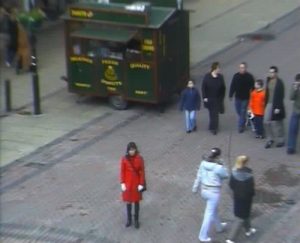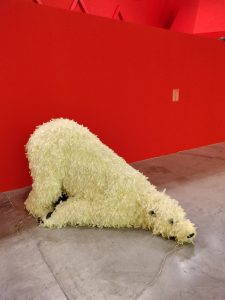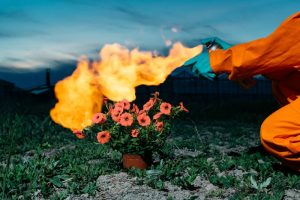It’s been a bumpy 2 weeks period of non-stop trips and commitments, my reports of several of the events i’ve attended recently are somewhat chaotic and delayed. Apologies for that. Back to the work in progress show i visited a couple of weeks ago at the Royal College of Art in London. I mentioned The Toaster Project, now’s the turn of another project by a student of the Design Interactions department: the shrewd and speculative Golden Institute, by Sascha Pohflepp.
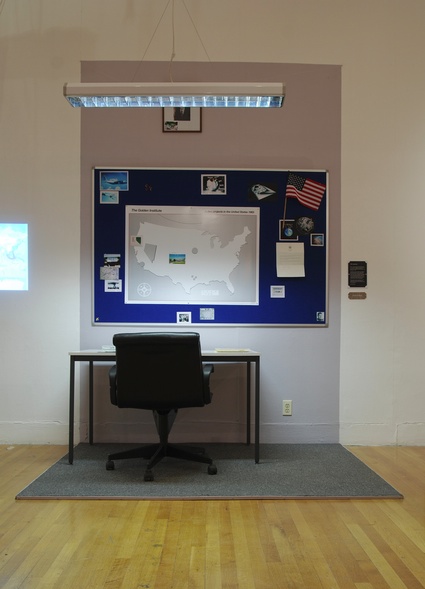 A replica of Douglas Arnd’s office when he was a senior strategist at the Golden Institute for Energies
A replica of Douglas Arnd’s office when he was a senior strategist at the Golden Institute for Energies
The Golden Institute for Energy is a think tank from an alternative reality where Jimmy Carter, instead of losing the 1981 presidential election, had defeated his Republican opponent Ronald Reagan. According to this scenario, a think thank would have been formed to pursue Carter’s energy policies (Carter it might be reminded had created the United States Department of Energy to respond to the 1973 energy crisis.) Located in Golden, Colorado, the think thank focused heavily on devising alternative sources of power for the United States. What would have happened if Carter had been able to pursue his environmentally-friendly policy? If money and resources had been poured into geo-engineering rather than into space programs?
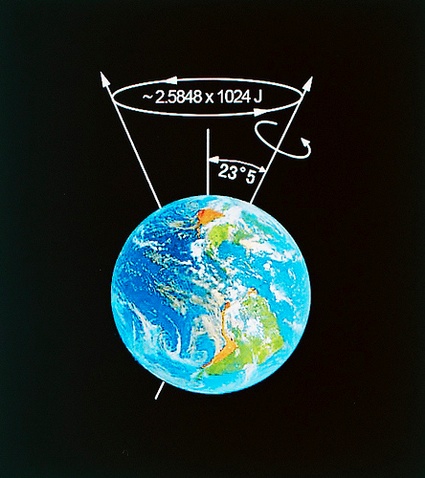 Project AMBER aims to use the momentum of Planet Earth, to drive a giant gyroscope near one of the poles
Project AMBER aims to use the momentum of Planet Earth, to drive a giant gyroscope near one of the poles
An independent corporation but equipped with virtually unlimited government funding, Golden quickly grew to be the earthbound equivalent of NASA, promising a future of national wealth through an abundance of energy. Research and development programs ranged in scale from manipulating the planet and its climate to the national economy and consumer products.
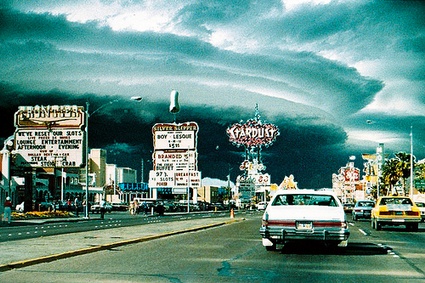 Project QUARTZ would turn an area or a state (most likely to be Nevada) into a weather-experimentation zone
Project QUARTZ would turn an area or a state (most likely to be Nevada) into a weather-experimentation zone
Their proposals ranged from planetary-scale geoengineering like manipulating the rotation of the Earth or the abolition of night (or even ‘better’ hacking planet Earth so that nights would be much longer in the Soviet Union than in the States) to domestic experiments like the declaration of Nevada into giant lightning-field. The strategists carefully designed the experiments and observed the reaction of the local population. For example the way that Las Vegas embraced the weather, offering Lightning Bingo or the lightning rod-trailer parks that were set up by people hoping to make a fortune through electricity. Further projects were centered around the car as an object which uniquely embodies energy and many American values.
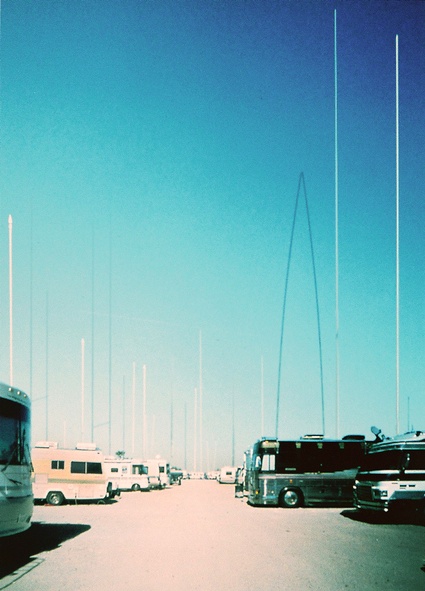 Private lightning rods (details)
Private lightning rods (details)
The Institute’s senior strategist was the prolific Douglas ‘Doug’ Arnd who regularly put forward his grand visions and became somewhat of a public figure. Often called megalomaniac by his contemporaries, the projects that Arnd and his colleagues at Golden pursued had significant impact on the 1980s and beyond in this alternative past.
Originating in research about the relationship of technology and idealism in Silicon Valley, this project takes the technique of future scenarios and attempts to turn it towards the past. This appears to be an interesting experiment, not only because technology-related art and design usually focus on the future. It also offers the opportunity of imagining what the present and its challenges would be like if different decisions had been made in the past. For example a radical focus on the promises of renewable energy instead of Reagan’s choice for defense and communication technologies.
It also implies that securing our future might require similar devices and asks how a Western society like the US could be transformed into one that regards the pursuit of alternative sources of energy as a visionary yet profitable endeavor. The vast scale of some proposals echo the Cold War, but are in fact surprisingly similar to what environmentalists like Saul Griffith are demanding today in order to combat global warming.
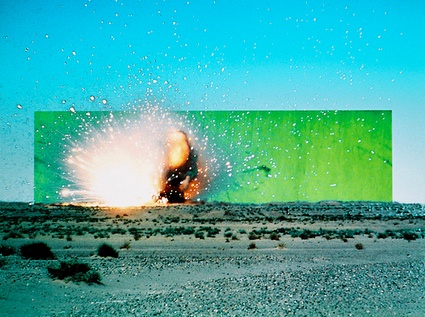 Project OPAL harnesses the velocity, prevalence and potential of the car to create energy for the nation and for the individual
Project OPAL harnesses the velocity, prevalence and potential of the car to create energy for the nation and for the individual
Lastly, the project reflects on the method of scenario-making itself, which was in fact invented by think tank RAND Corporation and Herman Kahn, and the way that designers are increasingly employing it today to forecast technological futures.
All images courtesy Sascha Pohflepp.
Related: Christina Hemauer’s and Roman Keller’s video and installation work, A Moral Equivalent of War: A Curiosity, a Museum Piece and an Example of a Road not Taken (2006-7) as mentioned in Ecological Strategies in Today’s Art (part 1.)

